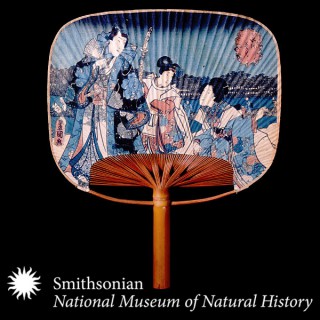
Prehistoric Trackways National Monument, New Mexico
Follow Prehistoric Trackways National Monument, New MexicoIn the mid-1980s paleontologist Jerry MacDonald brought national recognition to the Robledo Mountains, located northwest of Las Cruces, NM, when he found abundant fossilized trackways of ancient vertebrates and invertebrates. These trackways belong to the Permian Period (299-252 million years ago),…
Smithsonian Institution National Museum of Natural History
- Oct 17, 2011 LATEST EPISODE
- infrequent NEW EPISODES
- 11m AVG DURATION
- 10 EPISODES
More podcasts from Smithsonian Institution National Museum of Natural History
Latest episodes from Prehistoric Trackways National Monument, New Mexico

Lilia-Rosa Salmon and Jerry MacDonald discuss the various kinds of trackways found in the PTNM, the track-making animals, and the environments in which the trackways were preserved, including settings in which the animals walked over plant remains.

Visit Prehistoric Trackways National Monument with high school students and learn as they learn about the monument’s fossil resources from Jerry MacDonald and other visiting paleontologists.

Jerry MacDonald and Spencer Lucas talk about how trace fossils are made, who the track makers were, and what this tells us about similarities and differences between coastal ecosystems of the modern world and those of the of the Early Permian world.

Jerry MacDonald talks about the discovery of trackways in the Monument and the history of his work and that of collaborators within the PTNM, leading to its designation as a National Monument.

The plant fossils, particularly conifers, found in the PTNM, discussed by Smithsonian paleobotanist Bill DiMichele and Jerry MacDonald. Included are descriptions of the plants and how the fossils may have formed.

Scott Elrick hosts a conversation with Spencer Lucas, Jerry MacDonald and Bill DiMichele about life, paleogeography, and climate during the Early Permian Era on the western edge of the Pangaean supercontinent.

Geology of the PTNM and region discussed by Spencer Lucas, New Mexico Museum of Natural History and Science. Dr. Lucas explains the geologic forces that shaped the Monument and the ways in which geologists study and describe the exposures.

Smithsonian staffers Dan Chaney and Skip Lyles demonstrate and discuss fossil collecting techniques and museum curatorial practices.

Lori Allen and McKinney Briske of the Las Cruces office of the BLM discuss the PTNM, its public importance, and plans for the future of the Monument. Pat Hester, BLM Regional Paleontologist, discusses preservation and multiple use.

Spencer Lucas, Curator of Paleontology at New Mexico Museum of Natural History and Science, discusses the warm, shallow seas that occasionally covered the area that is now the Robledo Mountains, and the rich animal life that lived within them. He stresses the geological axiom that “the present is the key to the past."

















